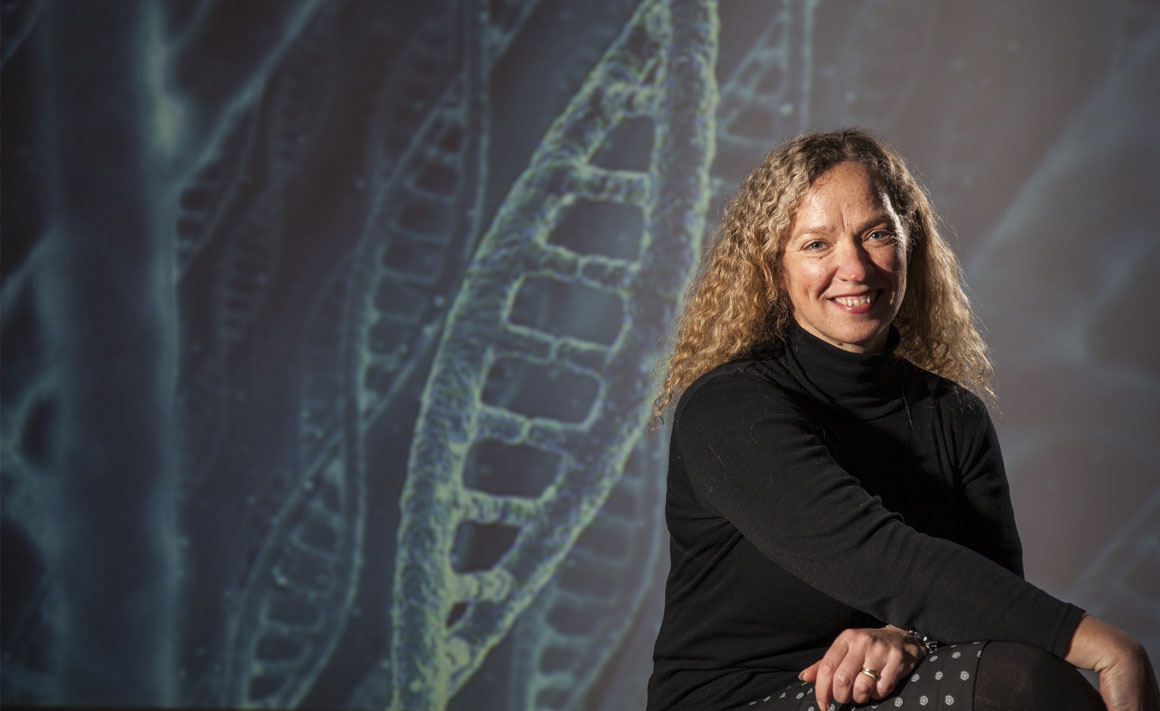
A principal investigator in the National Geographic Genographic Project, Professor Lisa Matisoo-Smith's work is revealing the global diversity of our New Zealand DNA.
Professor Lisa Matisoo-Smith is helping to tell one of the world's greatest human interest stories — finding out where we came from.
Matisoo-Smith (Anatomy) was approached to join the National Geographic Genographic Project, set up to trace the spread of human migration around the globe by analysing samples of people's DNA.
At first she was reluctant. She'd been working on the same questions around the Pacific, but with animal and plant models, being careful to respect local cultures.
“I'd seen a history of the inability of many worldwide projects to engage successfully with indigenous communities and I didn't want to follow on with those patterns. But the project had no one in the Pacific, which is a rather large part of the globe.
“Then, when I was working with a community in New Guinea on tracking the DNA history of animals transported by Pacific ancestors, they asked me why I didn't study their DNA as well. I talked to other communities and it seemed that many people were interested and engaged, and it all came together at the same time.”
Matisoo-Smith started sampling Pacific peoples, checking their mitochondrial DNA (mtDNA) to follow their maternal line and Y chromosome markers to follow paternal ancestry back through time.
The idea was to find out where their ancestors originated and what path they had followed to arrive at where they were now.
But tracing just the maternal and paternal lines has limitations. Fortunately, there was a major stride forwards with the next generation of DNA sequencing technology.
“Now, instead of checking just a small part of our DNA ancestry, we can look for ancestry markers across the genome. Similarly, this new technology allows us to quickly and relatively inexpensively sequence the entire mitochondrial genome rather than just a small portion.
“Previous research on Pacific mtDNA hadn't found much maternal variation. But when we sequenced complete mitochondrial genomes using the new technology, we found more variation than anyone had realised existed.”
Given the general interest and engagment with these types of ancestry studies, and that New Zealand was the last major landmass to be settled in the worldwide human migration, Matisoo-Smith proposed a study of the whole of New Zealand rather than just Māori and Pacific Islanders.
“This would allow us to study the genetic history of one of the youngest, yet highly diverse, national populations.”
With backing from the Genographic project, the Allan Wilson Centre for Molecular Ecology and Evolution, and a two-year James Cook Fellowship from the Royal Society, she began collecting 2000 random samples from New Zealanders.
“The collection would have been skewed if we had called for volunteers, so we just set up in various markets and random locations in cities around the country and asked people if they would take part.”
The project wrapped up in style with 200 samples taken from expatriate Kiwis who turned up at the New Zealand High Commission in London over two nights.
Now comes the long process of analysis and giving feedback to all the participants. Several of them, representatives of all of the major maternal lineages, will be interviewed about their results and the collated information eventually turned into a book and a country-wide lecture tour.
“It's a New Zealand story, but also a human story about where people came from and how they spread across the globe.”
Early results from around the country are already throwing up surprises. New Zealand is more of a global melting-pot than expected.
“We have pretty much all the diversity of the world – Asia, Europe, Africa, America. I expected diversity, but not this much and you can find nearly all of these connections even in Dunedin.”
“Most people would think that Dunedin might not be so diverse, but it is almost identical to Wellington and Christchurch, and all three are different from Hamilton and Auckland, partly because of the larger Māori and Pacific Island populations in the north.
“It's also interesting how different the different parts of Auckland are and how the results fit with where you see different communities settling. But if you compare our results with the census data they are pretty representative.”
With the recent release of GenoChip, the latest sequencing technology, Matisoo-Smith will be revisiting 200 DNA samples from Māori and Pacific Islanders to extract further information that will help clarify the process of Pacific settlement.
“GenoChip 2.0 can scan the genome for hundreds of thousands of particular markers associated with ancestry. Comparative data are lacking in the Pacific, so part of our research will be contributing to building a database for the area.”
Matisoo-Smith hopes that gathering comparative data from surrounding regions and connecting lineages will enable her to model population change throughout time, specific to New Zealand.
Meanwhile, her ongoing research into sampling animals and plants continues to round out the picture of global migration.
“The settlement of the Pacific and the Polynesian triangle is one of the greatest stories of human history.
”The Polynesian ancestors' acheivement in sailing across the Pacific and discovering all of these islands is something we as New Zealanders should be proud of. We should be celebrating this element of the history of this country.
“Identifying the pathways of migrations highlights the amazing determination and skills that our ancestors had to get them across and around the globe. It's also a way of engaging with the past and with genetic information that is culturally and personally relevant for all New Zealanders. Instead of conflict, we should be celebrating our unity.”
Listen to more about this project (thanks to RNZ).
FUNDING
- National Geographic Genographic Project
- Royal Society James Cook Fellowship
- Allan Wilson Centre
- University of Otago